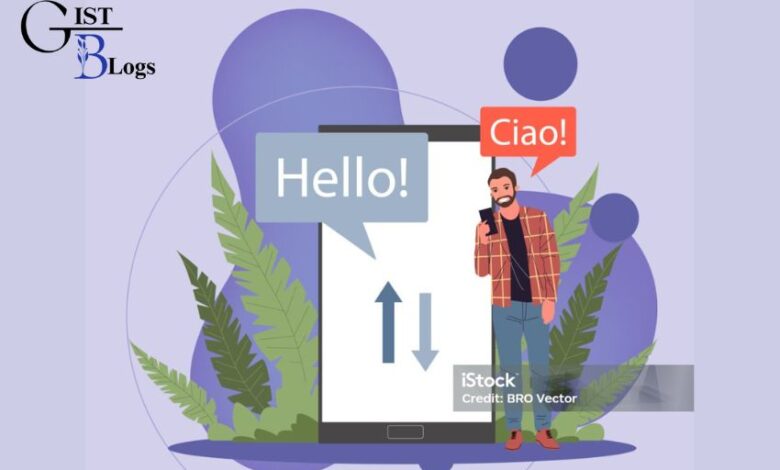Kääntäbä: Empowering Connections Through Communication
Kääntäbä: Bridging Cultural and Linguistic Divides

Introduction To Kääntäbä
The term kääntäbä holds a significant place in Finnish culture and language, representing much more than the act of translation. Derived from the Finnish verb “kääntää,” meaning “to turn” or “to twist,” kääntäbä embodies the intricate process of not just translating words, but also conveying the deeper meanings, cultural nuances, and emotional tones from one language to another. This term has become a symbol of linguistic and cultural unity in an increasingly interconnected world.
The Role of Kääntäbä in Finnish Culture
In Finland, kääntäbä reflects the country’s rich history of multilingualism. For centuries, Finnish culture has been influenced by Swedish, Russian, and English languages, among others. This multilingual environment has fostered a deep appreciation for the role of translators, or kääntäbä, who bridge the communication gaps between different linguistic communities. Finnish translators play a crucial role in various sectors, including literature, media, business, and technology, ensuring that messages are not only accurately translated but also culturally appropriate and engaging.
Challenges and Nuances in Translation
Translating kääntäbä involves navigating numerous challenges. One of the most significant is the need to capture the cultural essence of the original message. This task requires a deep understanding of both the source and target languages and cultures. For instance, certain Finnish expressions or cultural references may not have direct equivalents in other languages, necessitating creative solutions to convey the intended meaning accurately. This complexity highlights the art and science of translation, where kääntäbä must balance fidelity to the source material with the naturalness of the target language.
Kääntäbä in the Digital Age
The advent of digital technologies has profoundly impacted the field of translation. Machine translation (MT) tools have become invaluable for handling straightforward translation tasks quickly and efficiently. However, these tools often fall short when it comes to complex sentence structures, cultural references, and the subtle nuances of human language. As such, human translators, or kääntäbä, remain irreplaceable for high-quality translations that require a deep understanding of context and cultural sensitivity. The rise of social media has further amplified the importance of kääntäbä, making it a topic of global discussion and engagement.
The Cultural Significance of Kääntäbä
Beyond its linguistic challenges, kääntäbä carries profound cultural significance. It serves as a reminder of the importance of cultural sensitivity and inclusivity in global communication. By engaging with the complexities of kääntäbä, individuals and societies can develop a deeper appreciation for the subtleties of language and the richness of cultural diversity. This understanding fosters more meaningful and respectful global exchanges, promoting empathy and mutual respect among diverse cultural groups.
Kääntäbä in Literature and Art
In literature and art, kääntäbä often symbolizes themes of transformation, ambiguity, and existential inquiry. Through literary references and artistic representations, kääntäbä embodies the rich tapestry of human communication and cultural exchange. It serves as a recurring motif that highlights the dynamic interplay between language, culture, and identity. This metaphorical depth adds a layer of complexity to the term, making it a powerful tool for creative expression and cultural storytelling.
The Evolution of Kääntäbä
Historically, kääntäbä has evolved alongside Finnish society, reflecting changes in cultural and linguistic landscapes. From ancient rituals to modern-day expressions, kääntäbä has maintained its significance and adapted to contemporary contexts. Its journey through history offers valuable insights into its evolution and cultural impact. Today, kääntäbä continues to play a critical role in promoting intercultural dialogue and understanding, serving as a bridge between diverse linguistic and cultural communities.
Embracing the Spirit of Kääntäbä
As we navigate the complexities of global communication, embracing the spirit of kääntäbä becomes increasingly important. This term reminds us of the beauty and complexity woven into the fabric of language and culture. By valuing the contributions of skilled translators and fostering cultural sensitivity, we can build a more cohesive and interconnected world. Kääntäbä is not just about translating words; it’s about bridging divides and celebrating the diversity that enriches our global community.
The Future of Kääntäbä
Looking ahead, the role of kääntäbä in global communication is likely to grow even more critical. As international interactions increase, the demand for skilled translators who can navigate the complexities of language and culture will continue to rise. Educational institutions in Finland and around the world are preparing the next generation of kääntäbä with the linguistic skills, cultural knowledge, and technological expertise needed to succeed in this evolving landscape. These efforts ensure that the spirit of kääntäbä will thrive, promoting understanding and unity in an increasingly diverse and interconnected world.
Conclusion
In conclusion, kääntäbä is more than just a term for translation; it embodies the essence of cultural and linguistic unity. This term represents the vital role that translators play in bridging communication gaps and fostering understanding across languages and cultures. As the world continues to globalize, the importance of kääntäbä will only grow, ensuring that voices from all corners of the globe can be heard and understood. By embracing the spirit of kääntäbä, we celebrate the diversity and interconnectedness that enrich our human experience.
For more insights and discussions on kääntäbä and its significance in global communication, stay tuned to GistBlogs, where we delve into the rich tapestry of language and culture.




